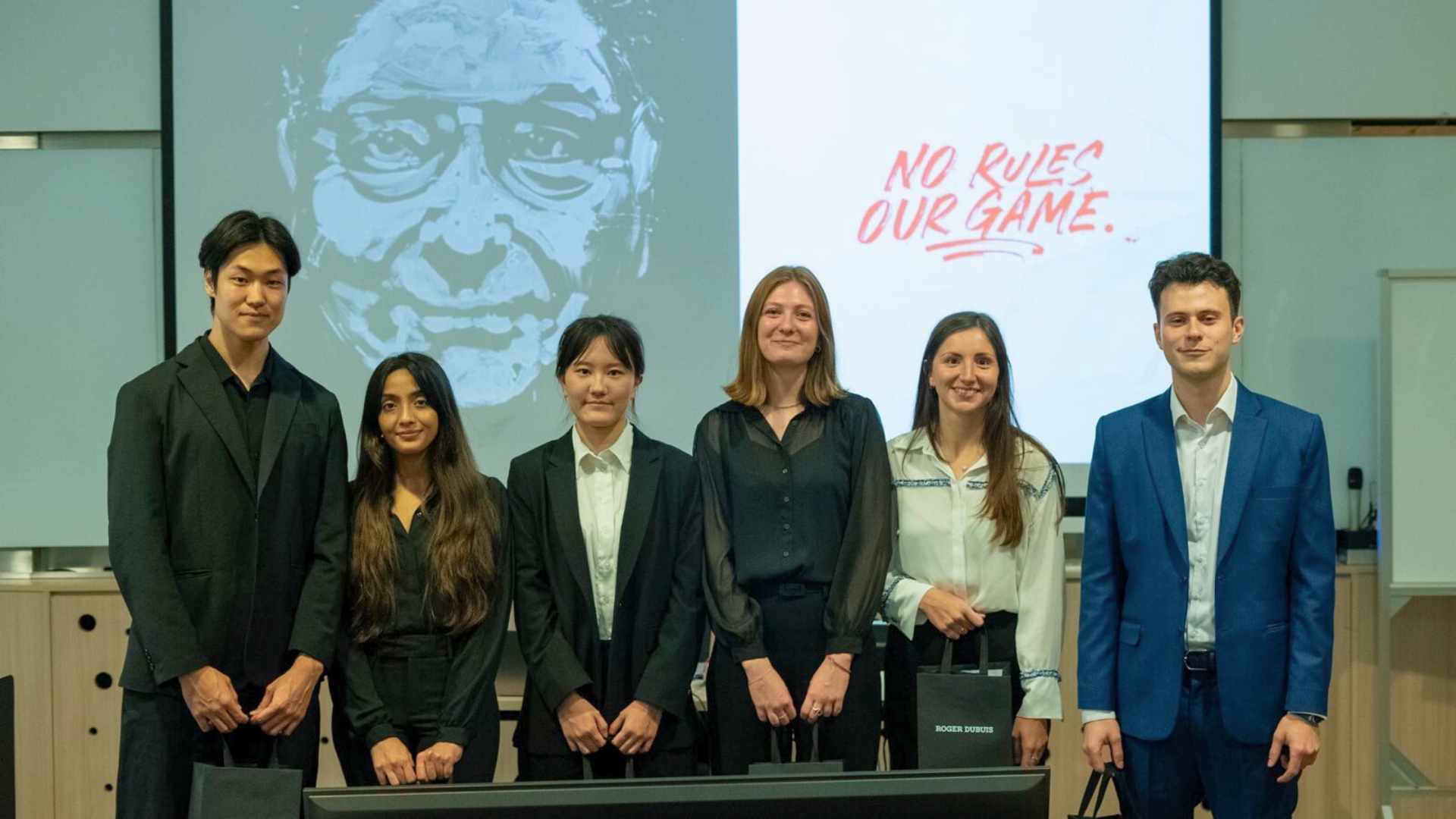By Sonja Prokopec
ESSEC Asia-Pacific’s Marketing Professor
What comes to mind when you hear the name Tiffany and Co.? The signature blue box or Audrey Hepburn? You wouldn’t be the only one.
In a study by branding expert Martin Lindstrom, the mere sight of an empty Tiffany’s box was enough to get hearts racing. The participants didn’t just see a color or box but the associations of love, romance, luxury, and engagement—all of which speak for the brand’s deep-seated awareness and appeal in the hearts of many.
Yet, in 2018, Interbrand only valued the company at US$5.6 million, a dip from its peak of US$6.3 million in 2015. In 2019, Tiffany failed to make the Forbes Most Valuable Brand list.
As Neil Saunders, managing director of retail research and consulting agency Conlumino Group, aptly put it: “The brand has lost a lot of traction with American consumers; it doesn’t have the shine it once did.”
This is set to change to under the wing of LVMH group’s experienced executives.
The Search for What Makes Tiffany & Co. Glitter
Tiffany’s almost two centuries of history make it a luxury marketer’s dream.
In 1845, it launched the Blue Book to catalog ornate gems and silvers, and in 1867, it made its mark, securing the grand prize for silver craftsmanship at the 1867 Paris World’s Fair. In 1878, the brand acquired the world’s first largest yellow diamond, and in 1886, it revolutionized the engagement scene with the world’s first modern diamond engagement ring.
These milestones, coupled with the brand’s connections to names like Elsa Peretti and Paloma Picasso, cemented the brand’s reputation—and to this day, its quality is not a question.
What LVMH can do, then, is to help strengthen the brand DNA and push the brand from the borders of the ordinary well into the realm of the exceptional.
After all, the DNA is the soul of a brand, and for luxury brands, it is what makes it unique. Therefore, The need is to identify the DNA, express its uniqueness, and weave it through every single product and experience to create a compelling and coherent brand universe that draws clients in and inspires them to dream.
Developing a Glowing Promise of Love
For centuries, Tiffany’s story of love has held the fort—but the emotion, however powerful, is typical for jewelers worldwide. One question LVMH executives will need to answer is how to delve deeper into this winning promise and present love so that it doesn’t just resonate but becomes increasingly desirable.
Tiffany’s 2015 “Will You?” ad campaign, which shifted away from traditional notions of love by featuring a same-sex couple, was a start. The ads were definitely more relatable, but without real faces, it is arguable that they lacked the storytelling and depth needed.
Contrast this with the brand’s latest “ABOUT LOVE” campaign, complete with a film starring Beyonce and Jay-Z. The star-studded reputation of the couple, paired with the significance of Beyonce being the first black woman to don a yellow Tiffany diamond, speaks volumes about not just love but also aspiration. With LVMH at the helm, we can expect more meaningful collaborations with stories that raise the brand’s desirability.
Radiating with New Visual Codes
This focus on DNA will trickle down to the visual codes used across the Tiffany universe. Current codes we are familiar with include the key pendant, the letter “T,” and the Elsa Peretti Open Heart collection. Still, there are signs of this being refreshed to suit the attitudes of contemporary customers with the new Tiffany Knot collection.
Inspired by the chain-link fences in the city, this collection is an ode to the edginess and strength of character of those in New York—it is also a well-timed launch as the city begins to recover from the blows of the pandemic.
There have also been bold shifts to the brand’s most iconic code, the signature Robin-egg blue shade. The Blue Box, Circa 3021 collaboration with Daniel Arsham for the Tiffany Knot collection saw Arsham introduce his signature “future relics” style to the Tiffany Blue Box, giving it a distressed, aged quality symbolic of its deep history.
More daring yet was the brand’s April Fool’s strategy to turn its shops yellow. Besides gaining massive media traction, this pushed the marketing for Yellow Diamonds, and, perhaps most importantly, it demonstrated that the brand retains the same confidence and creativity that propelled it to fame in its early years.
Only time will tell how these codes translate. Still, if done well, possibilities are endless, starting from the upscaling of the brand’s silver collection for a more premium feel to helping increase the brand’s visibility in its high-end products and rejuvenating its image with customers.
Transforming the Tiffany & Co. Universe
Which brings us to what these changes mean for the overall Tiffany universe.
Back in 2015, Tiffany’s online presence was sparkling with its reputation for responsiveness and the launch of the engagement ring finder app for a more intuitive and personalized shopping experience.
The experience continued in its London Style Studio, which opted out of traditional decor, instead drenching the walls with the brand’s trademark color and decorating them with dazzling neon signs. The brand also introduced features like the #MakeItTiffany customization bar, fragrance vending machines, and cafes at Tokyo and Manhattan outlets.
Looking at how new executive vice president Alexandre Arnault took to his personal Instagram account to ask followers what they would like to see the brand do, it seems likely that LVMH will raise the bar further.
This candid and upfront attitude, coupled with the appointment of the famed luxury retail architect Peter Marino to renovate its flagship store, sets the stage for a revamp of the entire Tiffany world, taking it beyond talk of diamond quality to integrate more storytelling elements and experiential components, elevating the Tiffany experience across all platforms.
A Diamond-class Future Awaits
Arnault’s focus on hype, celebrity, and culture may be questioned by some, especially with the introduction of a new range of ambassadors, including but not limited to Korean star Rosé, the Chinese actor and singer Jackson Yee, and British actress Anya Taylor-Joy, and partnerships with streetwear brands like Supreme.
Undoubtedly, collaborations are far more commonly found with fashion or champagne brands. Still, if Arnault’s success transforming Rimowa’s visual identity—which also involved partnerships with both luxury labels like Dior and Moncler and streetwear giants like Off-White and Supreme—is anything to go by, results will be promising, as long as these changes remain in sync with the brand’s overall DNA.
Ultimately, brand building and making a brand premium is a long-term strategy. Still, all of these small steps are in the right direction, leading Tiffany to a position alongside Cartier, Bulgari, and Van Cleef as one of the most desirable jewelry houses in the world.
RELATED POSTS
Green is the New Gold: Giving SMIB Students An Edge in Sustainable Finance
Sebastian Sohn shares why sustainability matters in the Sustainable Finance course for ESSEC Master in Strategy and Management of International…
Three MiF Curriculum Features that Make the ESSEC Asia-Pacific Campus Stand Out
Student Ambassadors share how the ESSEC Master in Finance at Singapore has prepared them for the world of finance.
Freedom and Practicality Draw Students from Asia to the MiM Program at ESSEC APAC
From diverse backgrounds to common goals, students from ESSEC's Master in Management program are shaping their futures with flexible learning and…
The MMD 2024 Digital Marketing Challenge: A Taste of the Real World
The annual Digital Marketing Challenge is arguably the biggest highlight of the MSc Marketing Management and Digital program. Student Ambassador…
Three Ways ESSEC GBBA Students Can Make the Most of Their Exchange
Student Ambassador Sagarika Majumdar and alumna Manqi Zhao share their tips.
How the ESSEC MMD Program Makes Learning Practical and Relevant
Fresh graduates need help entering the workforce, as they need more experience and have a limited understanding of the industry. ESSEC Master in…







